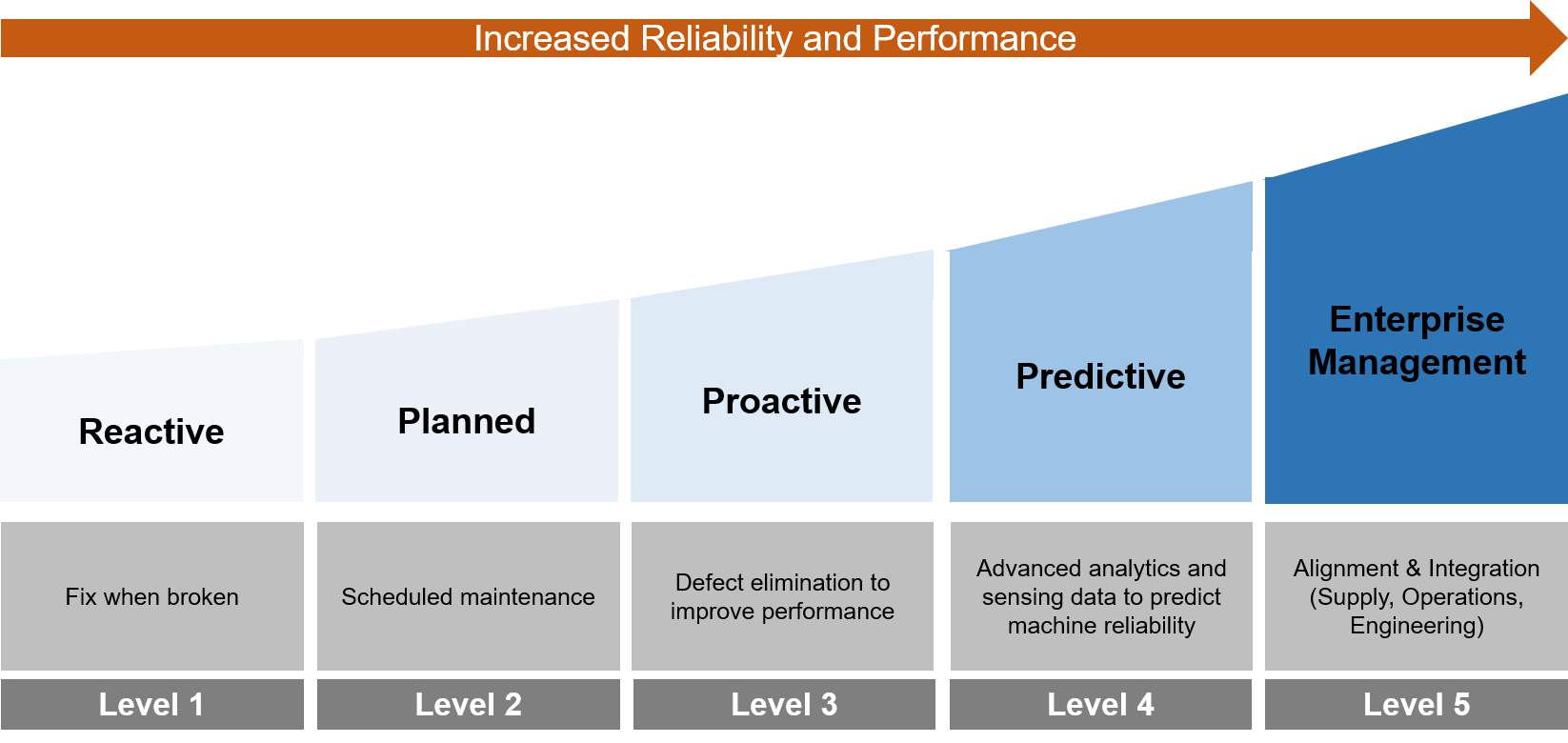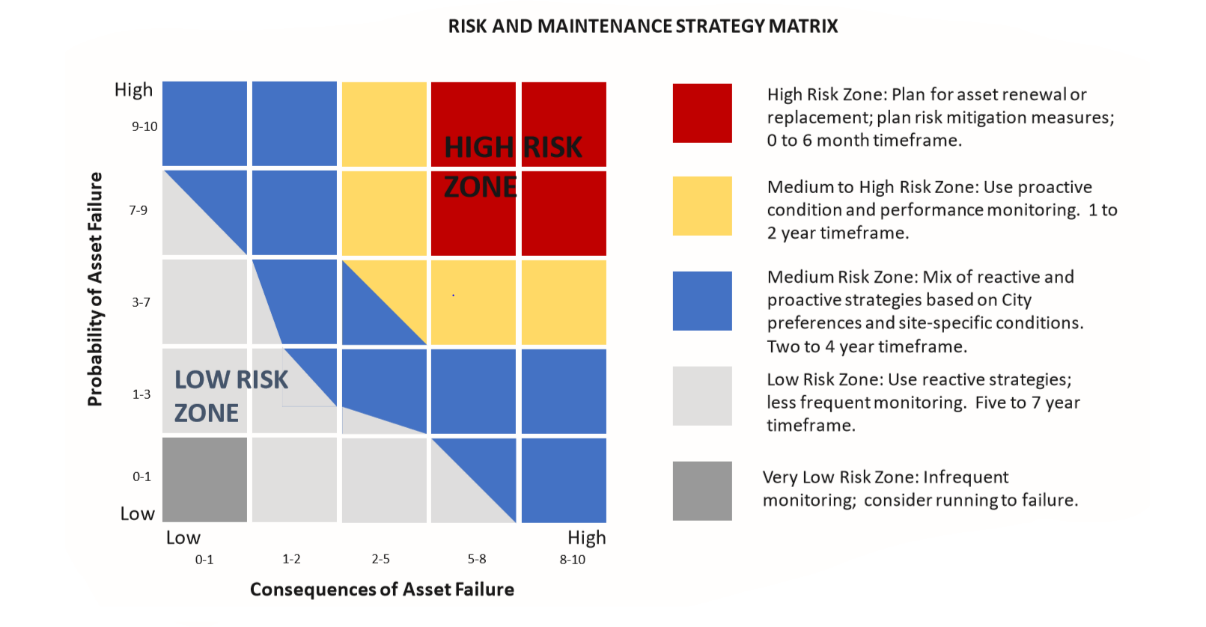

INSIGHT
9 steps to launch a successful asset management program
Connect with us
Municipalities and utilities of all sizes strive to provide reliable and affordable services to their ratepayers while protecting the health of the public and minimizing financial and environmental risks. These challenges must be faced in the context of a perfect storm of aging infrastructure and equipment, increasing operation and maintenance costs, aging workforces with increasing retirements and increasingly strict regulatory requirements.
One way to successfully address these multiple challenges is an effective asset management program. With sound implementation, user interface and data collection processes, an asset management program can help increase performance, reduce risk of failures, improve inherent reliability and lower the overall cost of asset ownership.
The foundational principles of a good asset management program can be applied to various utilities and facilities including linear assets such as wastewater and stormwater collection systems, power transmission and roadways as well as vertical assets such as buildings, pump stations, and water and wastewater treatment plants.
Getting Started
There are many options available for storing and analyzing asset information. Careful consideration should be made before choosing a system.
1. What is the level of difficulty for users that will be interacting with the system after it is set up?
2. Is training available to your users and is it included in the price?
3. Does the system allow for uploading information from the field?
4. Can the system upload and store the types of information that is important to you?
5. Will the system process and display the information you need to make both strategic and project decisions?
To help navigate through these questions, and others that will come up in the implementation process, an experienced consultant can be a valued partner in the process. As an example, here are some of the services an experienced consultant may offer:
- Identifying, uploading and analyzing existing infrastructure data
- Customizable database development to fit specific needs and requirements, including mobile capabilities for field usage
- Selection of assessment parameters, scoring criteria and weighting factors tailored for owner needs through a workshop process
- Provide alternatives to optimize infrastructure performance and phased improvements to align with budgets, guidelines and regulations
- Development of capital improvement programs including assembling bond committees, public works boards, bond management and cost estimates
- Development of improved design criteria, construction standards and Operation and Maintenance standards to incorporate information and assessments performed to date
- Usage training for staff
It’s the Journey, not the Destination

With asset management programs, the guiding principle is to continuously improve and add capabilities that provide the best fit and are cost-effective for each Owner’s situation. The important thing is to begin and start making progress to reach the level of development that best works for you.
Once the initial steps of setting up the program are completed, it is vital to keep information up to date.
A recommended general plan of approach can be broken down into the major steps shown below. These steps can vary based on the system and/or consultant you choose.

1. Develop an Asset Registry
The first step in the process is to assign a unique identifier and core information to each asset. Core information may include attributes such as construction materials, equipment types, date of installation, location, serial numbers, original equipment cost, and manufacturer’s estimates of typical lifespan. Data are sourced from as-built drawings, design drawings, manufacturer's manuals, bid documents, staff interviews and operation and maintenance databases.
2. Condition Assessment
In most cases it is preferable to perform field inspections to improve the accuracy of the asset registry and to perform condition assessments. Field inspections should include the collection of data and condition information that could be used to make strategic decisions as well as project-level decisions. In addition to scoring assessments of asset attributes, photographs are taken and sound recordings are made for assets in operation to document conditions during inspections. The purpose of condition assessment is to develop the data needed to determine remaining useful life of assets.
3. Asset Residual Life
The residual or remaining useful life of assets is assessed by evaluating for each asset its observed physical condition, its operation and maintenance history, and its years of service.
Asset condition assessment data are uploaded from the field, entered into a database and processed through a scoring algorithm to generate scores for equipment condition. Assets are inspected for the presence of leaks, evidence of past leaks, vibration, noise, condition of mountings, observable evidence of rehabilitation or repairs, the presence of corrosion and general appearance. Each inspection element is scored, and each element is weighted to compute a composite condition score. Operation and maintenance data from owner databases are also evaluated to generate a consolidated score for asset performance. Factors in this scoring evaluation consist of breakdowns per year, percent availability for operations, frequency of required maintenance, difficulty of repair, and the severity and cost of repairs.
Condition assessment and operation and maintenance scores are consolidated into an overall composite condition score and used with equipment age to assess remaining useful life.
4. Lifecycle and Replacement Cost
For each of the assets, the remaining useful life (RUL) is based on the composite condition score. The RUL, salvage value and cost of replacement for each asset are added directly to a database used to assess life-cycle costs, replacement costs and business risk exposure, which helps develop recommendations for repair and replace plans and capital improvement programs.
5. Set Levels of Service
Key indicators of performance, including owner expectations, regulatory requirements, costs, rate impacts and level of risk, are used to determine, track and assess level of service (LOS) goals, Business Risk Exposure Ratings and Risk Profiles
6. Determine Business Risk Exposure
Using information from the condition assessment and weighting factors, risk scores are developed for each asset and a Business Risk Exposure (BRE) score is developed for each asset.
The risk score is based on probability of failure and consequences of failure as rated for each asset. The risk score is used to assess the significance of failure using risk zones as shown below.
The BRE incorporates additional factors to allow for more detailed prioritization of asset improvement needs.

7. Optimize Operation & Maintenance and Capital Improvement Plan
Using the BRE score, and results from the risk and maintenance strategy matrix, a list of priority equipment repair and replacement needs can be developed in a systematic fashion to achieve plans for the lowest-cost investment in repairs, renewal and replacement of assets and an optimized capital improvement program.
8. Determine Funding Strategy
Depending on the desired levels of service and rate structures, if applicable, optimal and sustainable funding strategies are selected.
9. Prepare Asset Management Plan
The best way to implement an asset management plan is to get started. There are many acceptable specific approaches provided that the five core questions start to address. The overall approach should be iterative. Perfection is not the goal. Rather, Bartlett & West strives to work with each Owner to develop plans that perform at a level and cost that is best for them.
Capture and Share Learning
The asset management plan would include provisions for Owners to plan for and achieve continuous improvement. The main effort would be to capture and share any lessons learned and new understandings with respect to assessment and scoring procedures, level of service requirements and changing regulations. In addition, experience and data analyses would be leveraged in an effort to develop ideas and recommendations to improve operation and maintenance standards and modify design and construction standards to enhance inherent reliability and asset longevity.
Recommendations
Improved Design and Construction Standards
Beyond minimizing risk, the information collected and analyzed on existing infrastructure assets can lead to improving the design and construction standards for future projects.
Improved Operations and Maintenance Standards
Closely tracking the operation and maintenance of assets over time will reveal if the current processes are maximizing asset efficiency and lifecycle.
Expected Outcomes
Over time, an effective asset management program will improve customer relations and reduce asset failure while providing financial sustainability.
To achieve this level of success it is important to start the process by choosing a system that aligns with your specific requirements and an experienced consultant that works as your partner through every step of the process.
What questions to you have? We would love to hear from you. Connect with us below or use this link to learn more about Bartlett & West’s asset management services.
Learn more on getting started by downloading a free webinar, Asset Management: It’s the Journey, not the Destination.
Tell us about your project
We’d love to work with you. Tell us the services you are seeking and one of our team members will connect with you.
